Business in Paraguay, Asuncion, MERCOSUR
Paraguayan Economy and Foreign Trade. Paraguay-Parana Waterway, Logistics
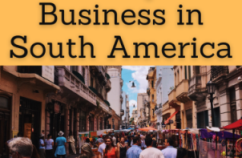
The Economy of the Republic of Paraguay (America) is small and open, with extensive reliance on Foreign Trade and local commerce
The Paraguayan economy is based on a few agricultural products production and export (soybeans and vegetable oils) and meat
Business related to import and consumer products re-export is strong in the informal economic sector
- Introduction to the Republic of Paraguay (South America)
- Paraguayan Economy
- Main economic sectors of the Paraguayan economy
- Doing Business in Asuncion
- Paraguayan International Trade
- Transport and Logistics
- Paraguay-Parana Waterway
- Access to the Paraguayan Market
- Business Plan for Paraguay

The objectives of the subject “Foreign Trade, Logistics and Business in Paraguay” are:
- To analyze the Paraguayan Economy, Logistics and Global Trade
- To conduct research on business opportunities in Paraguay
- To explore the Paraguayan trade relations with the student's country
- To learn about Paraguayan Trade Agreements
- To develop a business plan for the Paraguayan Market

The Subject “Foreign Trade, Logistics and Business in Paraguay” is included within the curriculum of the following academic programs at EENI Global Business School:
Masters: International Business, Foreign Trade.


Languages:  or
or  Paraguai
Paraguai  Paraguay
Paraguay  Paraguay.
Paraguay.
- Subject Credits “Doing Business in Paraguay”: 1

International Trade, Logistics and Business in Paraguay.

- Paraguay and the Hispanic American Economic Area
- MERCOSUR
- Latin American Integration Association (ALADI)
- Andean Community (associate member)
- Paraguay has bilateral Trade Agreements with the EU, India, and GCC
- Mexico-Paraguay Economic Complementation Agreement
- Union of South American Nations (UNASUR)
- Latin American and Caribbean Economic System
- Trade Negotiations Among Developing Countries
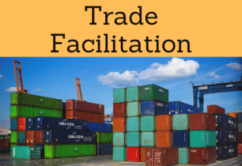
- World Trade Organization (WTO)
- Agreement on Trade in Services (GATS)
- Agreement on Sanitary Measures
- Agreement on Technical Barriers to Trade
- Agreement on Preshipment Inspection
- Agreement on Safeguards
- Trade Facilitation Agreement
- World Customs Organization (WCO)
- Kyoto Convention
- Hamburg Rules
- BIC
- Chicago Convention (ICAO)
- International Maritime Organization (IMO)
- Istanbul Convention - not a member
- Customs Convention on Containers - not a member
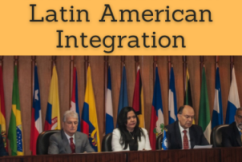
- Inter-American Development Bank
- Organization of American States (OAS)
- Economic Commission for Latin America (ECLAC)
- Africa-South America Summit
- East Asia-Latin America Cooperation
- Summit South American-Arab Countries
- CELAC
- European Union-CELAC Summit

- United Nations
- Conference on Trade and Development (UNCTAD)
- International Trade Centre
- World Intellectual Property Organization (WIPO)
- World Bank
- International Monetary Fund
- The Republic of Paraguay has significant water resources; the Guarani Aquifer System is the largest fresh water reserve in the World
- The Paraguayan rivers make their land very suitable for soybeans and cotton (main Paraguayan export products)
- Borders of the Republic of Paraguay: Brazil, Bolivia, and Argentina
- Paraguay has two official languages: Spanish and Guarani
- Capital of Paraguay: Asunción
- Paraguayan Population: 7 million people
- Paraguayan Area: 406,752 km²
- Independence of Paraguay from Spain: 1811
- Abolition of Slavery in Paraguay: 1842
- African Diaspora in Paraguay: 0.2 million people (3.5% of the Paraguayan population)
Religion in Paraguay: Christianity (Catholicism: 6 million).
Paraguay belongs to the Hispanic American Economic Area of Western Civilization.
Paraguayan Economy.
- The Paraguayan services sector represents 49% of GDP
- The Paraguay-Parana Waterway is intended to develop the logistics system between the Parana region (Brazil, Paraguay, and Argentina)
- The production structure of the Republic of Paraguay has undergone profound changes, such as the agriculture
- The Paraguayan GDP showed a negative growth rate of -3.8%
- The Itaipu hydroelectric dam is a Joint Venture between Paraguay and Brazil located on the Parana River; the dam is the world's largest hydroelectric central. The energy produced by Itaipu would be enough to supply electricity consumption worldwide for two days
- The currency of Paraguay is the Paraguayan Guarani (PYG)
- New Law on Public-Private Partnerships
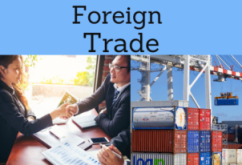
International Trade of Paraguay.
- Main Paraguayan export products are soybean (47%), vegetable oils (52%,) and meat products (5%)
- The SOFIA System is a computerized Foreign Trade customs clearance system that interacts directly with the Customs Brokers, transportation enterprises, Custodians, Customs Officials, and Organizations related to International Trade
- Paraguay was suspended of MERCOSUR in 2012-2013
(c) EENI Global Business School (1995-2025)
Top of this page






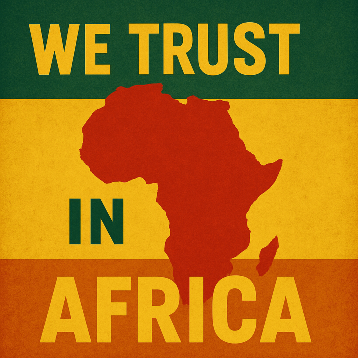


 WhatsApp
WhatsApp